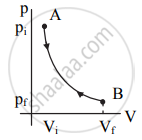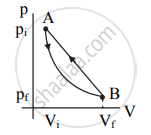Advertisements
Advertisements
प्रश्न
Differentiate between the reversible and irreversible processes.
उत्तर
| Sr. No. | Reversible process | Irreversible process |
| i. | A reversible process is a change that can be retraced in a reverse (opposite) direction. | An irreversible process is a change that cannot be retraced in a reverse (opposite) direction. |
| ii. | The path of a reversible process is the same in the forward and the reverse direction. | The path of an irreversible process is not the same in the forward and the reverse direction. |
| iii. | Reversible changes are very slow and there is no loss of any energy in the process. | There is a permanent loss of energy from the system due to friction or other dissipative forces in an irreversible process. |
| iv. | The system comes back to its initial state after it is taken along the reverse path. | The change of state depends upon the path taken to change the state during an irreversible process. |
| v. | Reversible processes are ideal processes. | Irreversible processes are real processes. |
| vi. |
p-V diagram:
|
p-V diagram:
|
संबंधित प्रश्न
Explain why The climate of a harbour town is more temperate than that of a town in a desert at the same latitude.
Draw a p-V diagram of the irreversible process.
Explain the cyclic process.
3 mole of a gas at temperature 400 K expands isothermally from an initial volume of 4 litres to a final volume of 8 litres. Find the work done by the gas. (R = 8.31 J mol-1 K-1)
Explain graphically (i) positive work with varying pressure, (ii) negative work with varying pressure, and (iii) positive work at constant pressure.
Explain the thermodynamics of the isochoric process.
When food is cooked in a vessel by keeping the lid closed, after some time the steam pushes the lid outward. By considering the steam as a thermodynamic system, then in the cooking process
In an isochoric process, we have ____________.
Apply first law for an adiabatic process.
Give the equation of state for an adiabatic process.
Draw the PV diagram for the isothermal process.
Can the given heat energy be completely converted to work in a cyclic process? If not, when can the heat can completely converted to work?
Derive the work done in an adiabatic process.
What are the limitations of the first law of thermodynamics?
Draw the TP diagram (P-x axis, T-y axis), VT(T-x axis, V-y axis) diagram for
- Isochoric process
- Isothermal process
- Isobaric process
An ideal gas is taken in a cyclic process as shown in the figure. Calculate
- work done by the gas
- work done on the gas
- Net work done in the process

For a given ideal gas 6 × 105 J heat energy is supplied and the volume of gas is increased from 4 m3 to 6 m3 at atmospheric pressure. Calculate
- the work done by the gas
- change in internal energy of the gas
- graph this process in PV and TV diagram
A thermodynamic system undergoes cyclic process ABCDA as shown in the figure. The work done by the system is ______

A monoatomic gas of pressure p having volume V expands isothermally to a volume 2V and then adiabatically to a volume 16V. The final pressure of the gas is ____________.
`("ratio of specific heats" = 5/3)`
In which of the following processes, beat is neither absorbed nor released by a system?
An ideal gas is compressed to half its initial volume by means of several processes. Which of the process results in the maximum work done on the gas?
Consider P-V diagram for an ideal gas shown in figure.
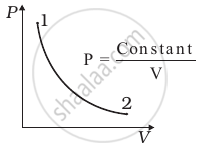
Out of the following diagrams (figure), which represents the T-P diagram?
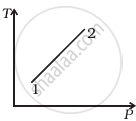 (i) |
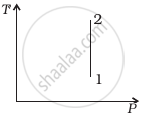 (ii) |
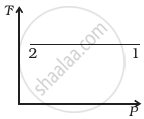 (iii) |
 (iv) |
In the figure shown here, the work done in the process ACBA is ______.
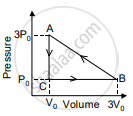
Explain the thermodynamic process.
When an inflated ballon is suddenly burst, why is the emerging air slightly cooled?
In a cyclic process, if ΔU = internal energy, W = work done, Q = Heat supplied then ______.
